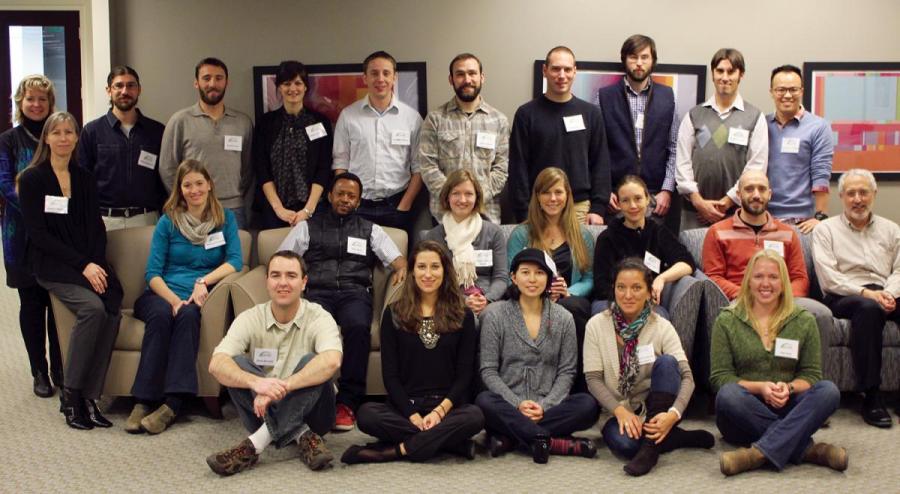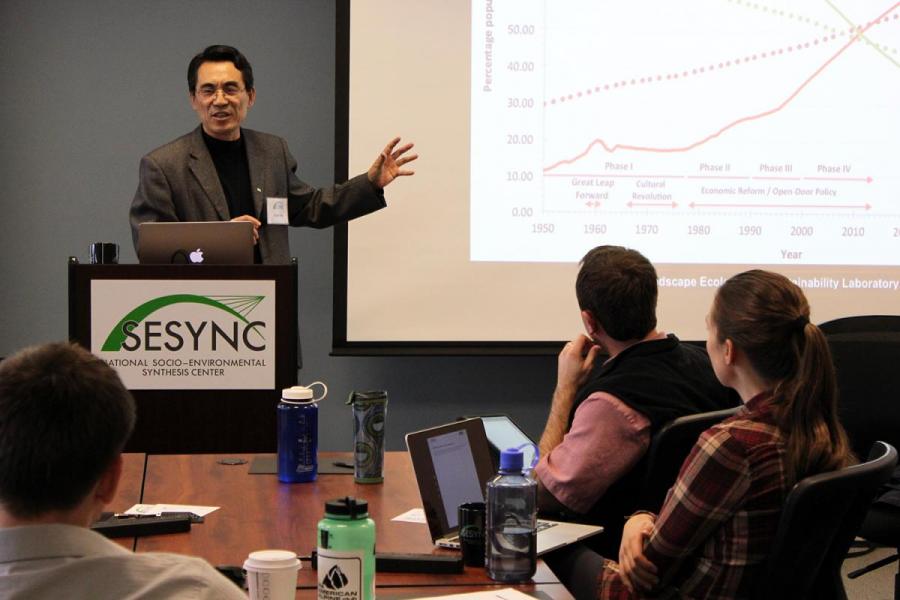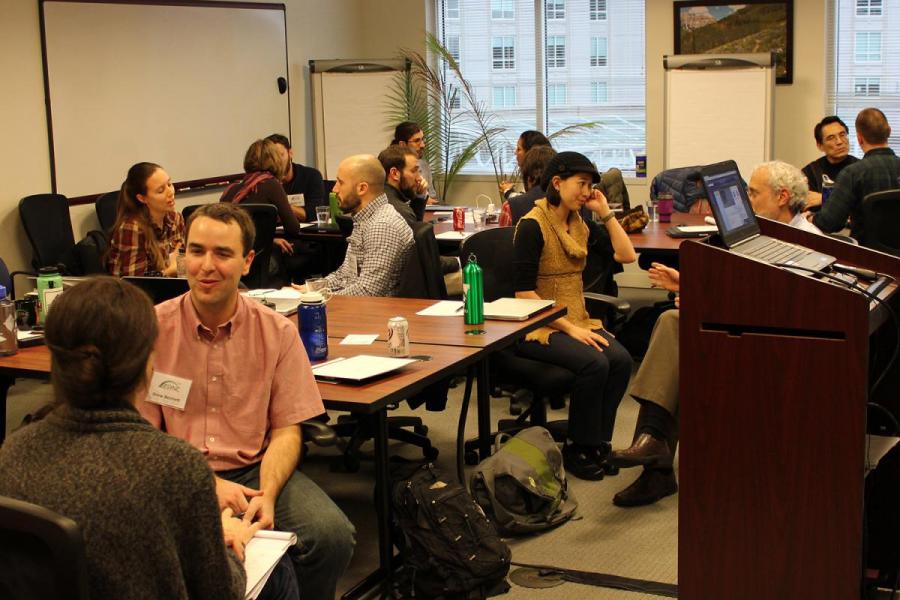
Socio-environmental synthesis: if it were easy, everyone would do it.
It’s a new research approach rooted in the multifaceted and complex interactions between humans and the ecosystems in which they live. It requires interdisciplinary teams of scholars, policy makers, and practitioners, who in many cases have never before worked together, to sit down at the same table. It calls for inquiry-based innovations sprung from newly constructed relationships and consensuses on traditionally competing semantics, methodologies, and world views.
Socio-environmental synthesis, it turns out, is anything but easy.
But it’s also the future of meaningful and actionable scientific research. That’s why we recently hosted 20 graduate students representing the future leaders of socio-environmental synthesis at our Center for a workshop specifically designed to support their pursuit of novel, independent synthesis research. The workshop was the second stage in what has been our engagement of graduate students at SESYNC—preceded by the Graduate Scholars Program, in which invited graduate students identified two Themes (general research topics that may include a variety of related research questions) exclusively for emerging scholars. The Themes, “Cities in Sustainable Resource Management” and “Surprise in Human Adaptation to Environmental Change,” are perfect examples of dynamic, complex socio-environmental problems that require the collaboration of disparate fields—from urban planning to oceanography and data science to human psychology—to begin to solve.
The challenges of interdisciplinary team science are something even established scholars at the top of their fields can struggle with. Divergent disciplinary ideas or goals; incompatible personalities; and strains on productivity related to inefficient communication methods, personnel turnover, etc. are all common difficulties.
Graduate researchers are ripe for the type of training and networking offered by this recent workshop. At this point in their education, in many cases, they are comparatively well exposed to interdisciplinarity. That wasn’t always the case.
“Thirty years ago, if you weren’t in one of those disciplinary silos, then you weren’t anywhere,” says Dr. Rachel Berndtson, SESYNC Research Associate and co-organizer of the workshop. “Now, you see interdisciplinarity everywhere—but there’s a big difference between seeing it or thinking about it and actually doing it. One of the major goals of this workshop was for the participants to leave with a tangible set of skills for tackling the ‘doing’ of interdisciplinary and team science.”
The nuts and bolts of the workshop consisted of general introductions to SESYNC and our thematic project structure, socio-environmental systems, and actionable science by Dr. Margaret Palmer, SESYNC Executive Director, and Dr. Jon Kramer, SESYNC Directory of Interdisciplinary Science. Keynote speakers Dr. Jianguo Wu, Arizona State University; Dr. Suzanne Malec-McKenna, The Morton Arboretum; and Dr. Karl Zimmerer, Pennsylvania State University spoke on the two Themes identified by the Graduate Scholars Program. And a panel of SESYNC project PIs—which included Dr. Brian McGill, University of Maine; Dr. Helen Fox, World Wildlife Fund; and Dr. Linwood Pendleton, Duke University—provided feedback and answered questions on their own experiences as leaders of interdisciplinary team science at SESYNC.
“Their insights were really valuable, because they’ve been through this, and were able to say, ‘Here are some of the things to look out for when putting together a project plan and working with a diverse research team,’” Berndtson says.

At the heart of the workshop was an emphasis on social dynamics. Those traditionally competing semantics, methodologies, and worldviews amongst interdisciplinary team members are where most of the challenges of managing such teams thrive—so establishing trust before the work even begins is crucial. The same held true for our workshop: the participants exemplified the diversity of gender, geographic location, and scientific background typical of the team projects we fund at SESYNC.
“I was really blown away by the degree to which everyone meshed,” Berndtson says. “I mean, these students were sitting directly next to their competitors. The caliber of scholarship was so high—some of the best graduate student resumes I’ve ever seen—but the spirit of collaboration and camaraderie was also high.
“The grad students independently organized a group following the second full day of the workshop, and, amongst other conversations, began discussing Pursuit proposals. During the third day, there were two or three separate break-out groups of students discussing what kind of data they had access to, how they might jointly frame their research, identifying people they know here or there that could do this or that as a potential member of another participant’s project. It was really cool to see those social catalysts for cooperation.”
SESYNC will formally announce its RFP for the graduate Themes in spring 2014. Graduate students in the social, natural, and computational sciences will be invited to apply—the opportunity will be open to students who attended the workshop, as well as students who did not attend.
While the workshop organizers hope to see proposals from all attendees, they know the graduate students can apply what they learned to work and research outside of SESYNC, as well.
“We viewed it as, we’re training the next generation of scholars to be capable of doing socio-environmental synthesis research. We would love for them all to be doing that at SESYNC, because what better forum?” says Berndtson. “But the need for socio-environmental research and interdisciplinary team science extends beyond SESYNC. These are skills they’ll carry throughout the rest of their careers.”
Take an inside view of the workshop. Click here to view Storified tweets from the workshop.

Above photo: Social and natural scientist "speed dating." Workshop participants get to know one another and build networking potential for future collaborations.